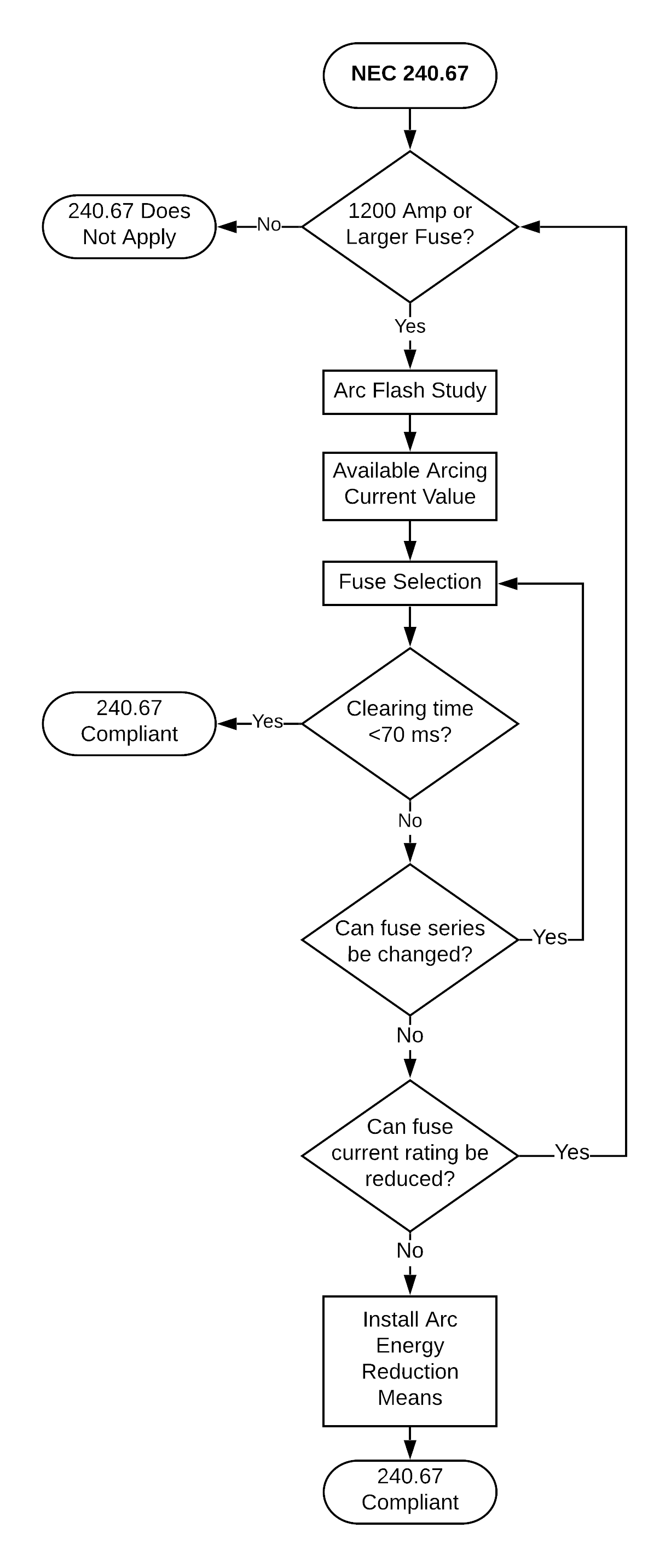 |
Home | Products | Support | Purchase | Contact |
NEC
240.67 COMPLIANCE & NFPA 70E ELECTRICAL SAFETY
The points below offer guidance for NEC
compliance and electrical safety. Each point has
individual merit.
Point 1:
Fuses have different characteristics.
Not all
Class L fuses are the same. Fuse manufacturers offer
different fuse types, each with unique characteristics
and clearing times. Once you have calculated the
available arcing current, look at the clearing times
of all available fuses. In many cases, simply
installing the appropriate Class L fuse will reduce
arc energy to a compliant level and improve safety.
Some of the more popular versions and their
accompanying data sheets are listed below.
Bussmann:
KLU KRP-C
601-2000 KRP-C
2001-6000
Point 2: Size the fuses according to the
continuous load, not the switch size.
In most
cases, fusible switches are sized at least 25% larger
than the continuous load calculations. Install fuses
that are rated for carrying the continuous load
current, not based on the size of the switch. Smaller
fuses will react faster when an adverse condition
occurs. Class L fuses can be used at 100% of their
rating and are uniquely designed so downsizing
can almost always be done without special adaptors. It
can be argued that when fuses are rated less than the
current rating of the switch, an “energy-reducing
active arc flash mitigation system” is created.
Point 3: Install an Arc Energy Mitigation System.
If after
searching for an appropriate fuse it is determined
that none are available that reduce the clearing time
to the .07 second requirement, installing an
appropriate arc energy mitigation system should be
pursued. Arc flash detection relays and sensors are
readily available from several manufacturers. Install
the components in the sections or cabinets that the
fuses feed. Wire the trip signal of the arc flash
detection components to the shunt trip mechanism where
the fuses are mounted.
Point 4: Always avoid work near energized
conductors!
This cannot
be stressed enough. Always put energized conductors
into an electrically safe work condition by turning
off the switch. Apply lockout/tagout and approach the
conductors as if they are energized. The safest way to
work near conductors is when they are de-energized.
Even in cases where a maintenance mode is an option,
turning the switch OFF provides a safer environment
than an activated maintenance mode with the switch ON.
The links below can offer guidance on selecting the
proper method for your application.
Bussmann
Arc Reduction Calculator
Littelfuse NEC 240.67 Arc-Energy Reduction (Technical Paper)
